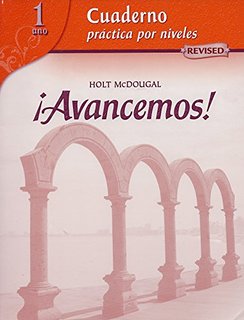
All Solutions
Page 77: Gramatica B
The objective of this exercise is to practise the use of the verb “estar” in Spanish.
By now, you have learned that the Spanish verbs “ser” and “estar” both mean “to be”. They are synonyms, but they are not interchangeable. Each carries its own value. For instance, you have already used the verb “ser” to say how someone looks like or what time it is. The former represents a permanent feature, whilst the latter is a temporal marker, i.e. it refers to time.
Precisely the opposite of the above, you will use the verb “estar” to talk about temporary features, e.g. how someone is feeling at the moment, or spatial markers (words that refer to space as opposed to time). Specifically in this exercise, you will use the verb “estar” to say where someone or something is located. Read the sentences and understad who or what the grammatical subject is. You will then agree the verb with the subject by grammatical person. You may refer to the below solutions for further guidance.
2. b. están
3. d. estamos
4. b. está
The purpose of this exercise is to practise the use of the Spanish verb “estar”.
In this exercise, you are given grammatical subjects and their complements. You will link these in a full sentence by using the appropriate conjugated form of the verb “estar”. You will be saying where someone is or how someone is feeling at the moment. Remember to always match the verb with the subject. You may refer to the below solutions for further guidance.
2. Los estudiantes están en la cafetería, que está al lado de la biblioteca.
3. El director está ocupado.
4. ¿Estás cansado?
The purpose of this exercise is to practise writing questions in Spanish.
In this exercise, you are given responses to questions. Your task is to write these questions. Read the responses and identify the grammatical subject and the verb. Switch their places and carry on with the rest of the sentence to create a question. Remember to begin all written questions with an inverted question mark (¿) and finish them with a regular question mark (?). Below, you will find an analysis of the first response.
Sí, la oficina del director está cerca del gimnasio.
Read the response carefully to understand where it comes from. The first word indicates that it was preceeded by a yes-or-no question. This means that you do not have to look for interrogative adverbs (qué, quién, dónde etc.). Your next step is to find the grammatical subject and the verb.
Start with the verb. You know that this is “está”. Since it matches its subject in grammatical number, look for words or phrases in singular that come before the verb. Between “la oficina” and “del director”, the fact that the latter has a preposition before the article means that it depends on another nominal word. This automatically eliminates “del director” as the subject, leaving “la oficina” as the only option. Furthermore, “la oficina” is precisely the nominal phrase that “del director” depends on; specifically, it describes it like an adjective, which ultimately means that your subject is “la oficina del director”.
Now you have identified the subject and the verb. The last step to create a question is to change their order and continue with the rest of the sentence. The question should then look like this:
¿Está la oficina del director cerca del gimnasio?
2. ¿Estás muy nervioso?
3. ¿Está el director enojado?

